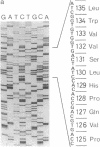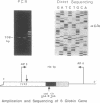Abstract
Analysis of the molecular basis of dominantly inherited beta-thalassemia in four families has revealed different mutations involving exon 3 of the beta-globin gene. It is suggested that the phenotypic difference between this condition and the more common recessive forms of beta-thalassemia lies mainly in the length and stability of the abnormal translation products that are synthesized and, in particular, whether they are capable of binding heme and producing aggregations that are relatively resistant to proteolytic degradation.
Full text
PDF
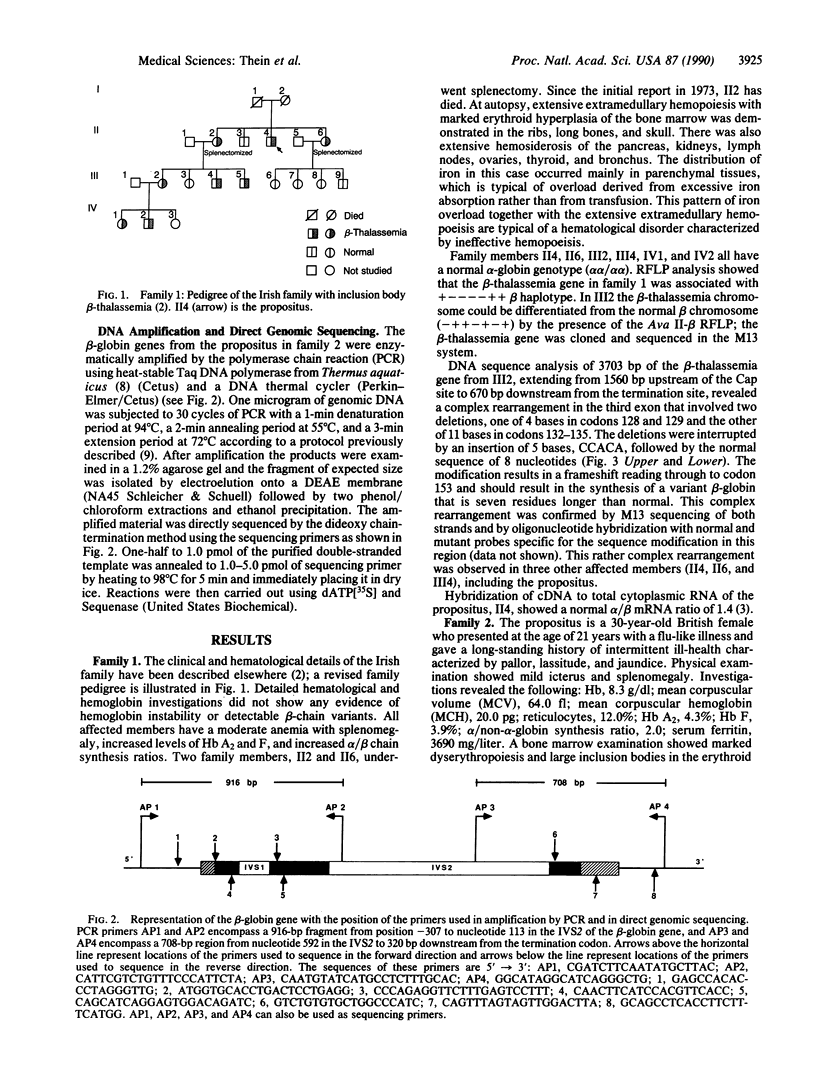
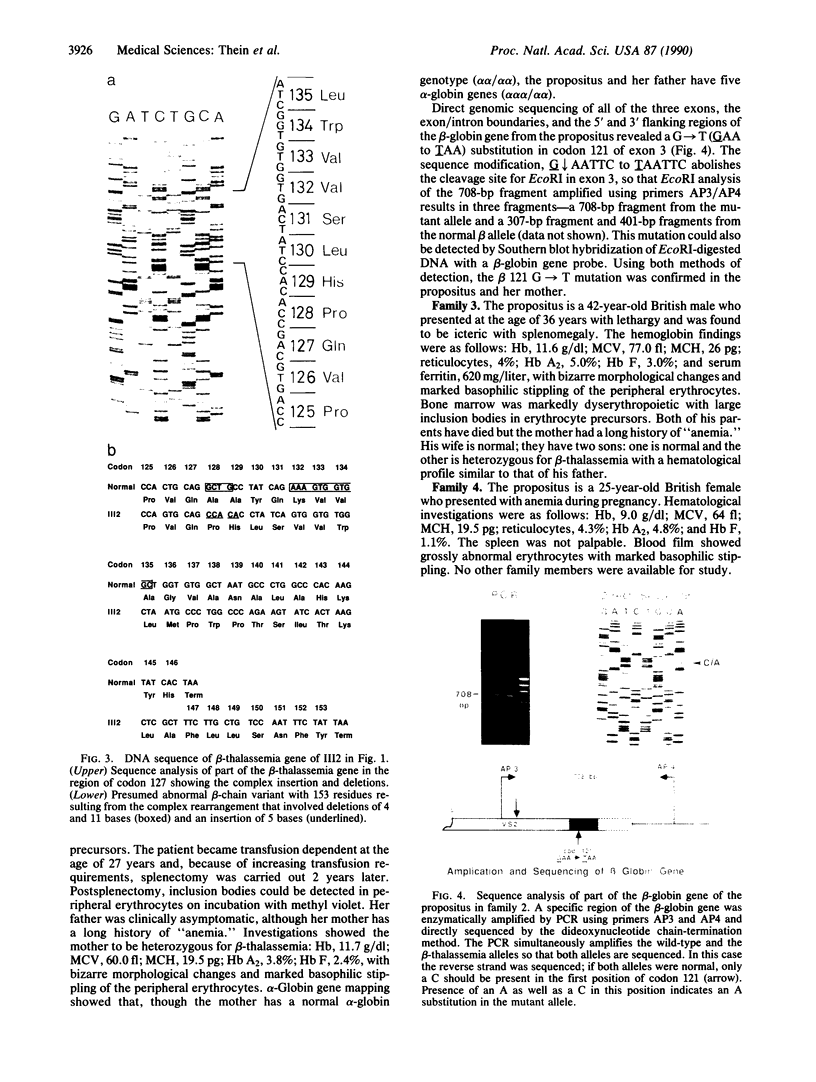
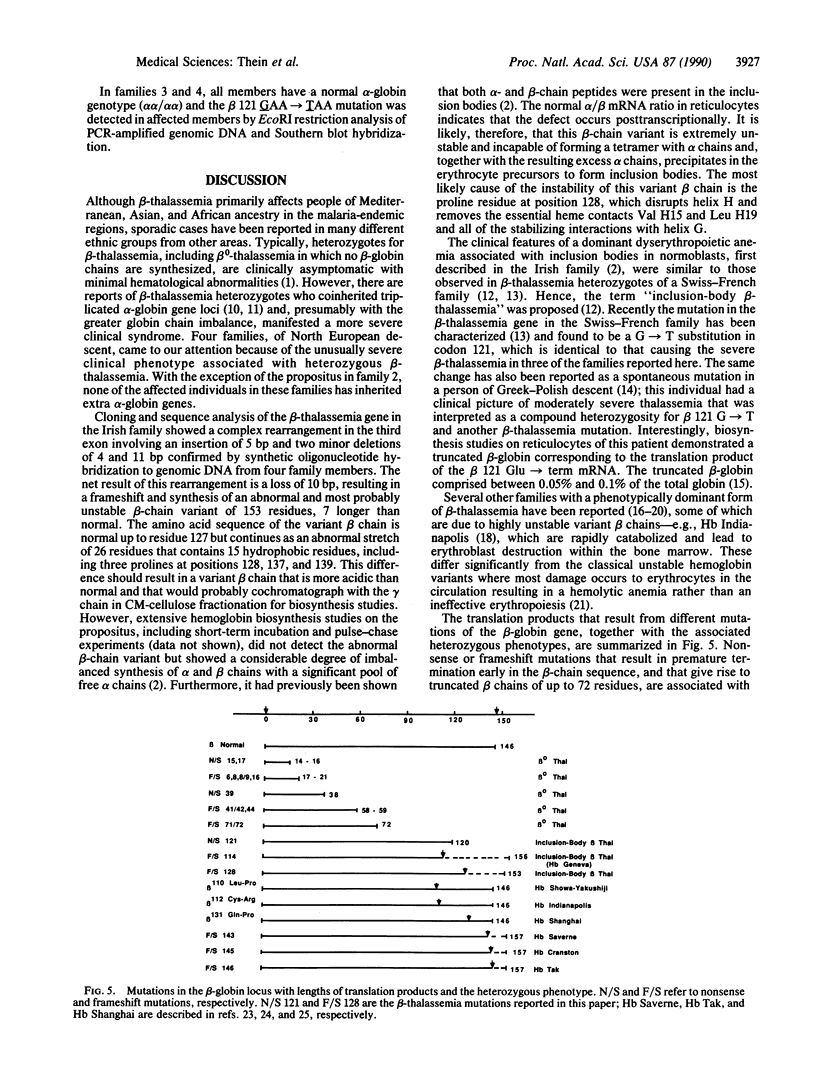
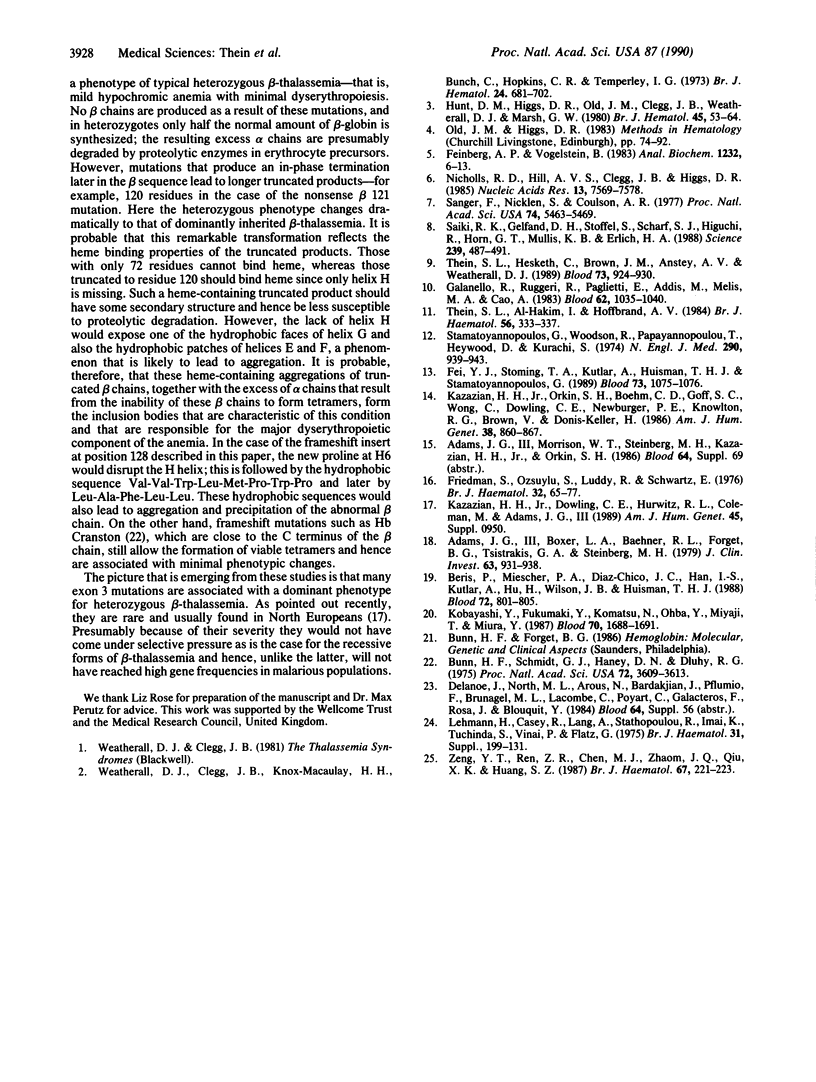
Images in this article
Selected References
These references are in PubMed. This may not be the complete list of references from this article.
- Adams J. G., 3rd, Boxer L. A., Baehner R. L., Forget B. G., Tsistrakis G. A., Steinberg M. H. Hemoglobin Indianapolis (beta 112[G14] arginine). An unstable beta-chain variant producing the phenotype of severe beta-thalassemia. J Clin Invest. 1979 May;63(5):931–938. doi: 10.1172/JCI109393. [DOI] [PMC free article] [PubMed] [Google Scholar]
- Beris P., Miescher P. A., Diaz-Chico J. C., Han I. S., Kutlar A., Hu H., Wilson J. B., Huisman T. H. Inclusion body beta-thalassemia trait in a Swiss family is caused by an abnormal hemoglobin (Geneva) with an altered and extended beta chain carboxy-terminus due to a modification in codon beta 114. Blood. 1988 Aug;72(2):801–805. [PubMed] [Google Scholar]
- Bunn H. F., Schmidt G. J., Haney D. N., Dluhy R. G. Hemoglobin Cranston, an unstable variant having an elongated beta chain due to nonhomologous crossover between two normal beta chain genes. Proc Natl Acad Sci U S A. 1975 Sep;72(9):3609–3613. doi: 10.1073/pnas.72.9.3609. [DOI] [PMC free article] [PubMed] [Google Scholar]
- Fei Y. J., Stoming T. A., Kutlar A., Huisman T. H., Stamatoyannopoulos G. One form of inclusion body beta-thalassemia is due to a GAA----TAA mutation at codon 121 of the beta chain. Blood. 1989 Mar;73(4):1075–1077. [PubMed] [Google Scholar]
- Feinberg A. P., Vogelstein B. A technique for radiolabeling DNA restriction endonuclease fragments to high specific activity. Anal Biochem. 1983 Jul 1;132(1):6–13. doi: 10.1016/0003-2697(83)90418-9. [DOI] [PubMed] [Google Scholar]
- Friedman S., Ozsoylu S., Luddy R., Schwartz E. Heterozygous beta thalassaemia of unusual severity. Br J Haematol. 1976 Jan;32(1):65–77. doi: 10.1111/j.1365-2141.1976.tb01876.x. [DOI] [PubMed] [Google Scholar]
- Galanello R., Ruggeri R., Paglietti E., Addis M., Melis M. A., Cao A. A family with segregating triplicated alpha globin loci and beta thalassemia. Blood. 1983 Nov;62(5):1035–1040. [PubMed] [Google Scholar]
- Hunt D. M., Higgs D. R., Clegg J. B., Weatherball D. J., Marsh G. W. Determination of alpha thalassaemia phenotypes by messenger RNA analysis. Br J Haematol. 1980 May;45(1):53–64. doi: 10.1111/j.1365-2141.1980.tb03810.x. [DOI] [PubMed] [Google Scholar]
- Kazazian H. H., Jr, Orkin S. H., Boehm C. D., Goff S. C., Wong C., Dowling C. E., Newburger P. E., Knowlton R. G., Brown V., Donis-Keller H. Characterization of a spontaneous mutation to a beta-thalassemia allele. Am J Hum Genet. 1986 Jun;38(6):860–867. [PMC free article] [PubMed] [Google Scholar]
- Kobayashi Y., Fukumaki Y., Komatsu N., Ohba Y., Miyaji T., Miura Y. A novel globin structural mutant, Showa-Yakushiji (beta 110 Leu-Pro) causing a beta-thalassemia phenotype. Blood. 1987 Nov;70(5):1688–1691. [PubMed] [Google Scholar]
- Nicholls R. D., Hill A. V., Clegg J. B., Higgs D. R. Direct cloning of specific genomic DNA sequences in plasmid libraries following fragment enrichment. Nucleic Acids Res. 1985 Nov 11;13(21):7569–7578. doi: 10.1093/nar/13.21.7569. [DOI] [PMC free article] [PubMed] [Google Scholar]
- Saiki R. K., Gelfand D. H., Stoffel S., Scharf S. J., Higuchi R., Horn G. T., Mullis K. B., Erlich H. A. Primer-directed enzymatic amplification of DNA with a thermostable DNA polymerase. Science. 1988 Jan 29;239(4839):487–491. doi: 10.1126/science.2448875. [DOI] [PubMed] [Google Scholar]
- Sanger F., Nicklen S., Coulson A. R. DNA sequencing with chain-terminating inhibitors. Proc Natl Acad Sci U S A. 1977 Dec;74(12):5463–5467. doi: 10.1073/pnas.74.12.5463. [DOI] [PMC free article] [PubMed] [Google Scholar]
- Stamatoyannopoulos G., Woodson R., Papayannopoulou T., Heywood D., Kurachi S. Inclusion-body beta-thalassemia trait. A form of beta thalassemia producing clinical manifestations in simple heterozygotes. N Engl J Med. 1974 Apr 25;290(17):939–943. doi: 10.1056/NEJM197404252901705. [DOI] [PubMed] [Google Scholar]
- Thein S. L., Al-Hakim I., Hoffbrand A. V. Thalassaemia intermedia: a new molecular basis. Br J Haematol. 1984 Feb;56(2):333–337. doi: 10.1111/j.1365-2141.1984.tb03960.x. [DOI] [PubMed] [Google Scholar]
- Thein S. L., Hesketh C., Brown J. M., Anstey A. V., Weatherall D. J. Molecular characterization of a high A2 beta thalassemia by direct sequencing of single strand enriched amplified genomic DNA. Blood. 1989 Mar;73(4):924–930. [PubMed] [Google Scholar]
- Weatherall D. J., Clegg J. B., Knox-Macaulay H. H., Bunch C., Hopkins C. R., Temperley I. J. A genetically determined disorder with features both of thalassaemia and congenital dyserythropoietic anaemia. Br J Haematol. 1973 Jun;24(6):681–702. doi: 10.1111/j.1365-2141.1973.tb01696.x. [DOI] [PubMed] [Google Scholar]
- Zeng Y. T., Ren Z. R., Chen M. J., Zhao J. Q., Qiu X. K., Huang S. Z. A new unstable haemoglobin variant: Hb Shanghai [beta 131(H9)Gln----Pro] found in China. Br J Haematol. 1987 Oct;67(2):221–223. doi: 10.1111/j.1365-2141.1987.tb02330.x. [DOI] [PubMed] [Google Scholar]



